Ideal for birdwatchers, flower lovers, history buffs, hikers or just those looking to escape the summer heat, the Tengjhih National Forest Recreation Area (藤枝國家森林遊樂區) in Kaohsiung has something for everyone. Despite being closed for over 10 years, the facilities are in excellent shape; but don’t wait too long to visit, as there’s no telling when the next big typhoon will close it once again.
The park contains almost equal parts primeval forest and reforested areas, with the balance slightly in favor of the former. During the Japanese era, the Tengjhih area was a research forest for Kyoto University, but it experienced intensive logging in later years. When logging came to an end in the 1980s, it was finally repurposed as a recreation area for tourists. All logged areas have regenerated nicely and visitors can now experience both broadleaf and conifer trees, along with an abundance of birds and flowers, in a serene mountain environment that is often enveloped in fog. Expect temperatures to be 8 to 10 degrees cooler than in the lowlands: perfect for those stifling summer days.
In order to allow for logging operations, a road to Tengjhih was built by Chinese Nationalist Party military veterans in cooperation with locals in the 1950s. Unlike most forest roads, it is two lanes for most of its length and has an asphalt surface, making for a comfortable drive. Along the way, the road passes by the Bunun village of Erjituan (二集團), which has the distinction of being the highest village south of Chiayi in western Taiwan. At the 18-kilometer marker, the road is currently blocked off, a result of Tengjhih’s unfortunate fate in recent years.
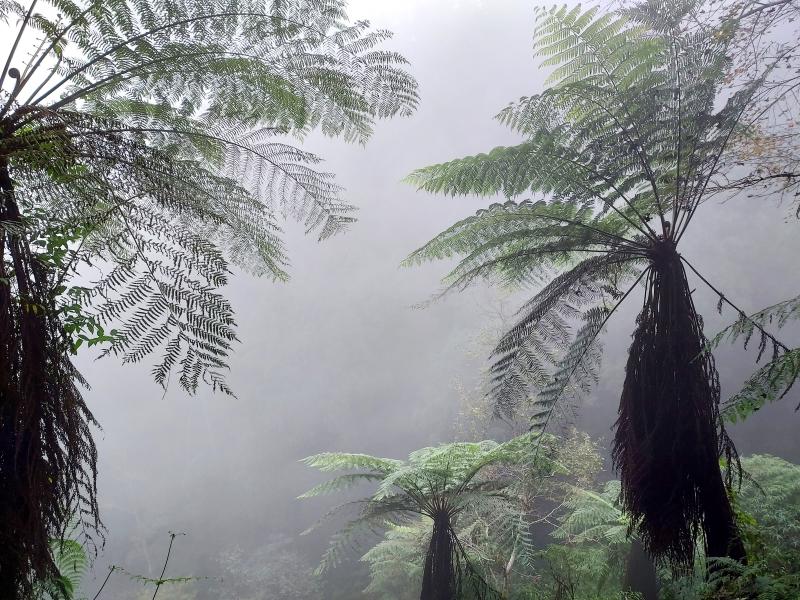
Photo: Tyler Cottenie
THE PARK THAT JUST CAN’T STAY OPEN
Originally opened in 1983, the park operated normally until the infamous Typhoon Morakot utterly destroyed the last kilometer of road leading to the park in 2009. Repairs were undertaken, but before the park could reopen, another typhoon in 2012 washed away the same section of road. Authorities called a halt to repairs after this, and the park’s future remained in limbo for years. Finally, in 2019, the park was provisionally reopened for a period of three months, with visitors having to take a detour around the washed-out road on foot to access the park. Road work started up again and by early last year, Tengjhih was once again connected to the outside world by road. The park fully reopened to the public on May 7 after a hiatus of over a decade.
Just three months later, nearly two meters of rain fell on Tengjhih in a single week. The same section of road was once again washed away, and the park closed again.
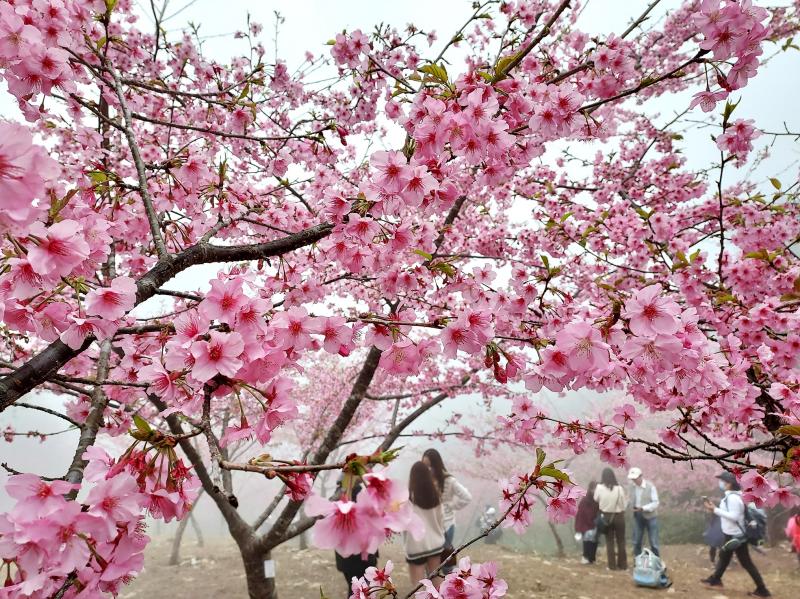
Photo: Tyler Cottenie
Luckily, authorities did not wait for the road to be repaired before opening the park this time. On Dec. 31, the park was reopened to the public, with visitors now having to walk a kilometer-long forest trail detour to reach the park entrance. This adds an extra hour and some extra exertion to any trip to Tengjhih that should be factored in when planning a visit.
After reporting to the ticket counter and purchasing an entrance ticket, visitors enter the park via an easy 15-minute walk on an asphalt road that leads to the Visitor Center. From here, a network of trails branches out. There is one long loop that takes several hours to walk, and a connecting trail in the middle for those wanting to make a shorter loop. For those who only want a casual stroll in the forest without much exertion, simply forego making a loop and walk in and out a short while on the leftmost trail, the Sea of Trees Trail.
Just a short walk down this easy, flat path is the Cryptomeria Observation Deck. This is a flat area with picnic tables and benches surrounded by planted Japanese cedar (Cryptomeria) trees. This species, first imported by the Japanese for reforestation, was one of the most commonly used species throughout Taiwan’s entire logging period. It is a beautiful, straight tree with reddish bark. The juxtaposition of these vertical trees with the horizontal lines of the picnic grounds makes for a picturesque, almost garden-like setting enticing visitors to stop and take a break here.
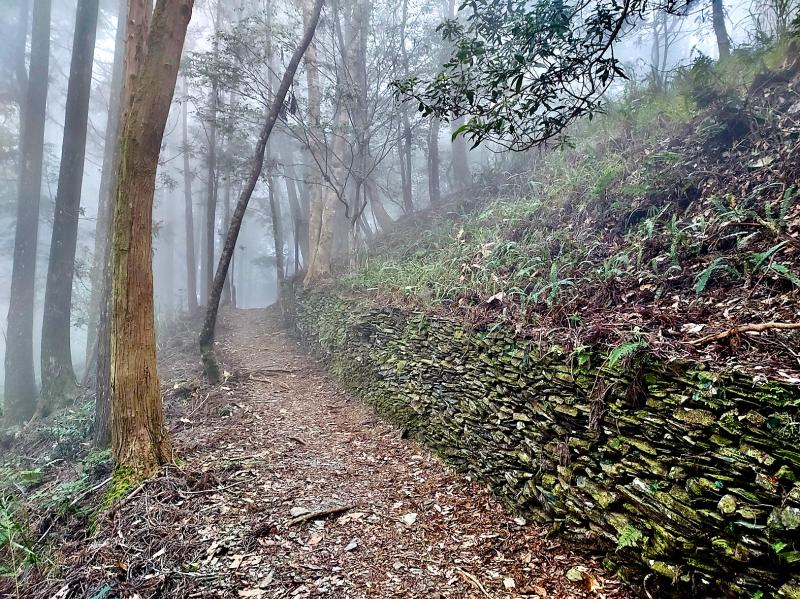
Photo: Tyler Cottenie
The flat trail continues on for a time, ending at another rest area, at which point the Taiwan Rhododendron Trail begins its steep ascent up the mountain. In the spring, the rhododendron trees along this trail are in full bloom, dotting the forest with a gorgeous pink. Just as this trail nears the top of its steepest ascent, keen observers will notice the remains of a much older trail in front of them: the Liugui Garrison Trail (六龜警備道). University research facilities were not the only Japanese installations in these mountains.
AN ELECTRIFYING HISTORY
The Liugui Garrison Trail was one of many built in Taiwan at the time to separate Japanese and Han Chinese from mountain Indigenous people. A 50-meter-wide swath of trees was cleared along the ridge and electric fencing with enough current to kill was installed for protection. The trail was raised along most of its length, with clearly demarcated stone sides. Stone-walled police stations were built at regular intervals and low areas were bridged using stone, with culverts for drainage where necessary.
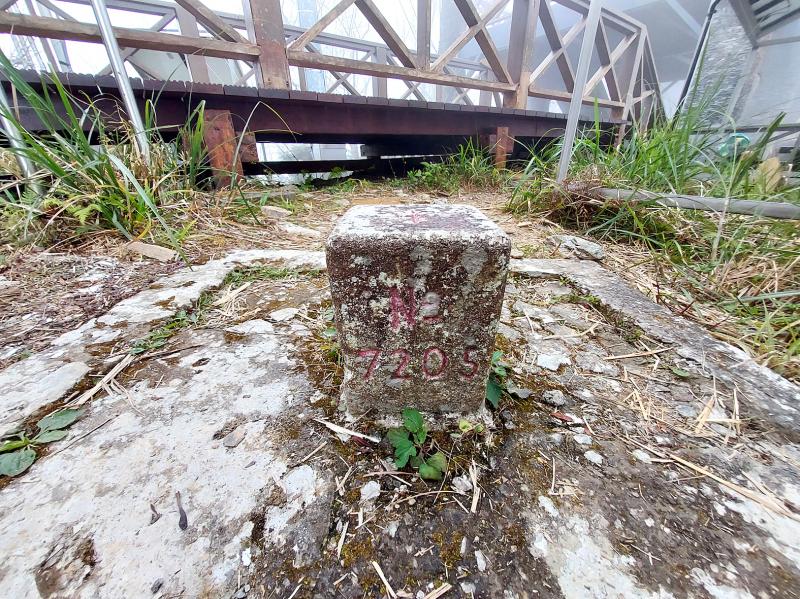
Photo: Tyler Cottenie
Though the trees have all grown back and the fencing is gone, these stone structures still remain in many places. Hikers on the Taiwan Rhododendron Trail will encounter both raised stone roads and building remains at the Fuchu Police Station (府中分遣所). After this station, a large portion of the current trail is on the original Liugui Garrison Trail.
Continuing the loop, visitors then reach the site of a former forest fire watch tower at the peak of East Tengjhih Mountain (東藤枝山), one of Taiwan’s Minor 100 Peaks. The watch tower fell into disrepair and was replaced by a two-tiered wood and slate deck and observation platform around the turn of the century. At 1,804 meters, this is the highest point on the Tengjhih trail system and makes for a perfect rest spot. On clear days, a climb up to the second level should afford visitors with commanding views of the adjacent valleys.
Not far ahead, another rest area marks the site of the Okabe (岡部) Police Station. From here, one can turn right and descend to the Japanese cedar rest area again, or continue straight to return to the Visitor Center. The park’s namesake, the Tengjhih Police Station, is not far away either, but no official trails exist to reach these remains. The Visitor Center has a basic shop with souvenirs, noodles, rice dumplings, drinks and souvenirs. There is plenty of seating indoors and out, and a small library of local history books to browse.
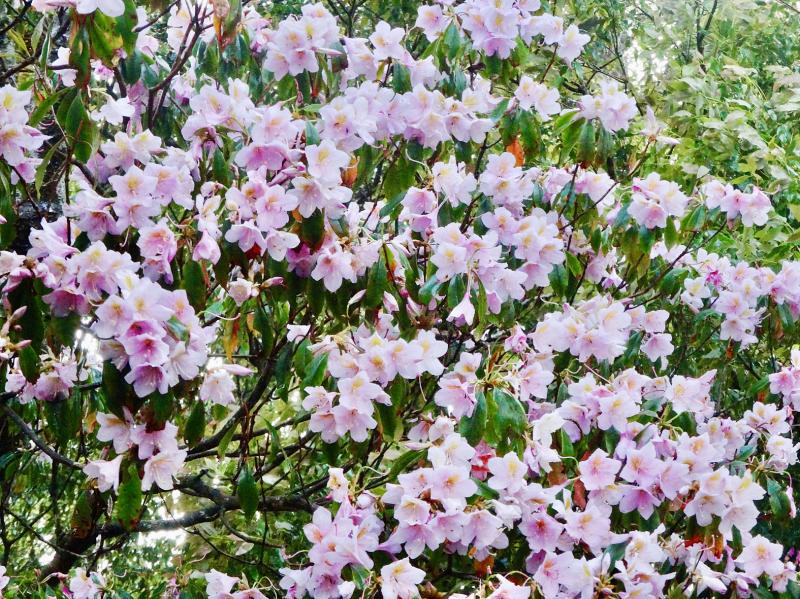
Photo: Tyler Cottenie
There are no overnight accommodations in Tengjhih, but homestays are available in nearby Erjituan. Even for day trippers, this village is worth a visit. On weekends, there is a market set up selling local foods like fig jelly and roast boar. In January and February each year, the nearby cherry blossom park attracts thousands of visitors. A stop in Erjituan before the long drive home makes for a perfect ending to any trip to Tengjhih.

Photo: Tyler Cottenie

June 2 to June 8 Taiwan’s woodcutters believe that if they see even one speck of red in their cooked rice, no matter how small, an accident is going to happen. Peng Chin-tian (彭錦田) swears that this has proven to be true at every stop during his decades-long career in the logging industry. Along with mining, timber harvesting was once considered the most dangerous profession in Taiwan. Not only were mishaps common during all stages of processing, it was difficult to transport the injured to get medical treatment. Many died during the arduous journey. Peng recounts some of his accidents in

“Why does Taiwan identity decline?”a group of researchers lead by University of Nevada political scientist Austin Wang (王宏恩) asked in a recent paper. After all, it is not difficult to explain the rise in Taiwanese identity after the early 1990s. But no model predicted its decline during the 2016-2018 period, they say. After testing various alternative explanations, Wang et al argue that the fall-off in Taiwanese identity during that period is related to voter hedging based on the performance of the Democratic Progressive Party (DPP). Since the DPP is perceived as the guardian of Taiwan identity, when it performs well,

A short walk beneath the dense Amazon canopy, the forest abruptly opens up. Fallen logs are rotting, the trees grow sparser and the temperature rises in places sunlight hits the ground. This is what 24 years of severe drought looks like in the world’s largest rainforest. But this patch of degraded forest, about the size of a soccer field, is a scientific experiment. Launched in 2000 by Brazilian and British scientists, Esecaflor — short for “Forest Drought Study Project” in Portuguese — set out to simulate a future in which the changing climate could deplete the Amazon of rainfall. It is

Artifacts found at archeological sites in France and Spain along the Bay of Biscay shoreline show that humans have been crafting tools from whale bones since more than 20,000 years ago, illustrating anew the resourcefulness of prehistoric people. The tools, primarily hunting implements such as projectile points, were fashioned from the bones of at least five species of large whales, the researchers said. Bones from sperm whales were the most abundant, followed by fin whales, gray whales, right or bowhead whales — two species indistinguishable with the analytical method used in the study — and blue whales. With seafaring capabilities by humans